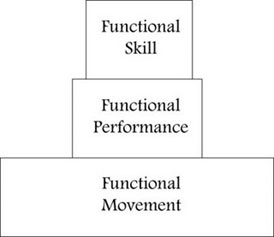A new client came in the other day and was interested in running better. But when we talked it became clear that before we could help him run better, he had to regain “running eligibility”. He was constantly caught in an injury cycle and was desperate for a solution. He was frustrated that, just as his fitness was close to an all-time high, knee pain threatened his every stride. Hold on. Running eligibility? Huh?
Yup, you gotta earn the right to run.
But we're Born To Run!
Yeah, you WERE. But you aren't anymore. Thanks to that desk job. Thanks to that car. Thanks to that special occasion meal every couple of days.
The bottom line is that you've likely lost your basic ability to move PROPERLY. When you try to run, you are equally likely to be running on one compensatory movement after another. How do you think that's going to play out?
Well, if you run at the typically recommended 180 strides per minute, you're going to accumulate a lot of strides → impact → tissue stress.
In fact, here's a formula that reliably predicts injury risk:
Injury = [Number of Repetitions X Force] / [Range of Motion Amplitude X Relaxation]
Basically, in running, we have a lot of repetitions and a lot of force (2.4-2.6 times bodyweight). At the same time, we have very little range of motion and, since everyone wants to train for a marathon these days, very little relaxation!
So the formula predicts that we are playing with fire by choosing to run. Crap.
But wait... “I love to run and I'm not gonna stop!”
So, ok, I finally have some good news. You don't have to stop running. You just have to understand one basic fact.
Your ability to move properly makes it possible to train for running.
 Remember how the ball coach used to preach fundamentals, fundamentals, fundamentals? Well, we need to have basic human movement fundamentals down pat before we, uh, train for a marathon!
Remember how the ball coach used to preach fundamentals, fundamentals, fundamentals? Well, we need to have basic human movement fundamentals down pat before we, uh, train for a marathon!
I educated my new client about movement, took him through the Functional Movement Screen (FMS) process and identified his weakest link. We were now on the road to recovery. Turns out he needed help re-learning hip separation. I gave him drills that improved his hip mobility within a few minutes.
He must practice these simple, proven movement drills in the morning, before running, and at night. This is what it will take to make lasting improvement in his movement quality. In fact, one of them is soooo simple: breathing properly. More on this later...
In the next installment, we'll discuss why focusing on mobility before stability is critical when reprogramming movement habits.
